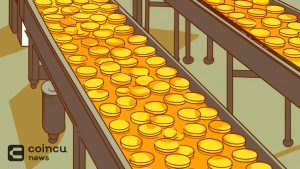What is Burn coin?
Burn coins are the process by which crypto miners, on high-powered computers, deliver tokens to a specific address – where private keys are kept that no one can steal. Simply put, it removes tokens from the circulating supply by the user to slow the rate of coin inflation or reduce the circulating collection of coins. It is also known as Proof-of-Burn, a variant of Proof-of-Work.

If all of the above sounds familiar to you, it resembles the concept of a publicly-traded company initiating a regular share buyback program (aka common stock). If that company uses cash to redeem a portion of its ordinary shares, the number of shares outstanding in the market will decrease. That way, the number of shares outstanding will become scarcer than before, making their value likely to skyrocket.
Moreover (at least for publicly traded companies), earnings can be improved from each share because they divide net earnings by fewer shares in circulation.
Why burn coins?
The growth of the value of coins
The decrease in the supply of coins in the market increases investors’ demand for tokens (according to the law of supply and demand). In other words, the fewer tokens available on the network, the higher their exchange rate will be. This approach is known as the downside mechanism, which aims to increase the value of the cryptocurrency as the upstream supply increases with the inflation mechanism. That’s why most projects limit the number of cryptocurrencies issued to increase their importance.
Burning coins also makes the project more attractive to investors in the long term because the value of the coins has guaranteed growth.
Correction of errors and mistakes of the project created
Burn coins can solve inadvertent errors made by the project. The misclassification occurs due to the higher than expected number of coins or the creation of invalid tokens due to technical errors or coins issued unsuitable for trading.
Burning occurs simply by sending them to a special address that cannot be withdrawn, ensuring that unwanted excesses can be safely disposed of.
Disposal of unsaleable contracts
The projects are limited to the number of coins sold to raise capital in the initial ICO period. However, this Coin does not sell out in some cases, and the project owner can sell it to increase profits. However, the best treatment is to burn excess tokens, which can avoid allegations that the project has additional purposes other than business.
Distribution of shares to and among shareholders
Instead of paying dividends directly to shareholders, the owners of the projects can reward shareholders with tokens. These shareholders will burn the coins received to increase the value of their assets because burning the tokens will increase their value due to the shortage of artificial supply in circulation.
In summary, the burning of coins aims to reduce the inflation mechanism to increase the project’s value and attract investors’ interest in the long term with a significant investment gap. They do not mean burning assets but, on the contrary, increasing the value of coins.
How burn coins are done
To remove coins from the market, developers and mining servers can send large amounts of coins to specialized addresses without a private key. Therefore, no one can retrieve that amount of coins for later use, which is considered to disappear permanently.

The token burn event occurs in the following order:
- Step 1: Confirm the burn amount of one Coin – The performer uses the pre-set coin burn feature and confirms the burn amount of 1 coin.
- Step 2: Verify the number of good burners – The smart contract will verify that the number of coins in the wallet is valid compared to the number of coins you want to burn.
Valid: Total number of coins – Number of coins burned > 0 (Remaining amount of coins is greater than 0 – Invalid: Total number of coins – Number of coins burned ≤ 0 (Remaining amount of coins is less than or equal to 0)
- Step 3: Perform the specified coin burn
If valid, then the specified amount of coins will be excluded from the wallet and permanently canceled.
The properties of the Coin have been burned.
- Unrecoverable: Cryptocurrencies cannot be recovered after they are burned
- Transparency: All money burns are recorded as a transaction on the Blockchain, meaning they are 100% transparent, and anyone can verify that the amount of coins has been canceled.
The benefits of burning coins
According to the law of supply and demand, the fewer Tokens in the market, the higher the value. Burning coins makes the project more attractive to investors in the short term because the coins have guaranteed growth value.

Correcting mistakes
Burning coins is the way to solve errors such as:
- An excessive number of coins generated
- Issuance of inappropriate coins
Avoid accusations with unsold Coins
- Although it is possible to sell surplus coins for profit, most projects limit the number of coins they sell during ICO. However, there is still the possibility that an unsold quantity remains in the wallet of the company and the project owner.
- Burning coins helps avoid fraud allegations: It is best to burn off excess coins to regain equity for both the market and the owner.
Increase in value of assets (dividends) for investors
The shareholders own the Token by purchase or Airdrop. If tokens are burned away will create a scarce supply, thereby helping investors increase the value of their assets
Risks of burning coins
Some investors see the burning of coins as a signal that crypto developers are looking for ways to protect investors from their tokens. But if you consider the burning of coins a positive thing, it can become a mistake.
The biggest problem with coin burning is the assumption that the number of tokens in circulation will decrease, which means that a virtual currency will rise in price. But reality shows that the circulation of tokens looks pretty loose and often challenging to identify.
The most significant risk is to see coin burning as a positive event as it can increase token value.
Bitcoin is an example of why burning coins may not work out as expected. Some analysts think that the limited quantity, at most 21 million BTC, will help ensure the value of BTC, and its price is very high now, no one is financially strong enough to be able to carry out the burning. Moreover, many other coins are created based on BTC through the hard fork process, such as bitcoin cash (BCH), bitcoin gold (BCG), etc. Therefore, thinking about the scarcity of BTC is not practical.
DISCLAIMER: The Information on this website is provided as general market commentary and does not constitute investment advice. We encourage you to do your own research before investing.
Join CoinCu Telegram to keep track of news: https://t.me/coincunews
Follow CoinCu Youtube Channel | Follow CoinCu Facebook page
KAI
CoinCu News



















